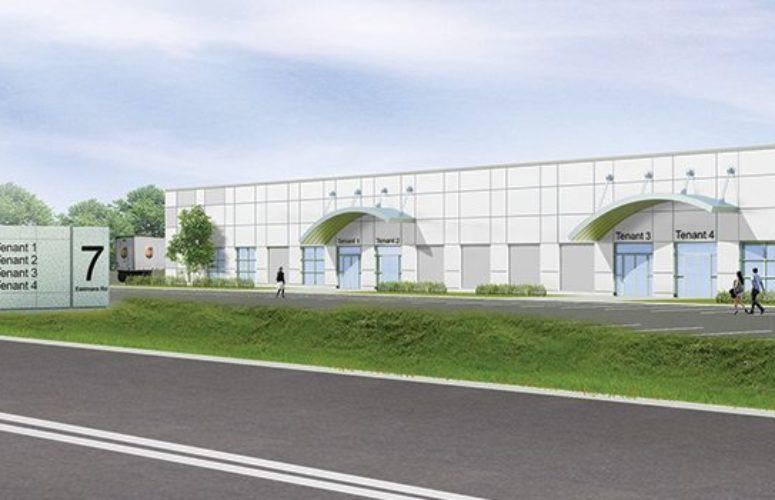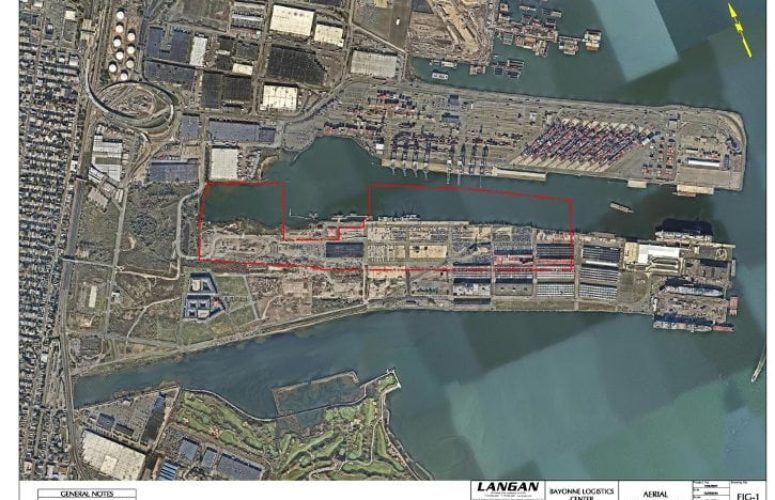
NJ Industrial Real Estate Driven By Retail
E-commerce fulfillment centers and big-box distribution hubs pave the way.
By Tim McEntyre, Contributing Writer On Apr 17, 2017The continuous and steady uphill climb of New Jersey’s commercial industrial real estate market is surely and steadfastly hitched to the ongoing and seemingly not soon-to-slow journey of retail goods providers, in their quest to acquire any available (moreover strategically-placed) distribution, fulfillment and logistics space. This is creating a “demand” that’s becoming increasingly more challenging to “supply” – according to top New Jersey industrial real estate leaders.
Speaking broadly about New Jersey industrial real estate, David Zimmel, CEO of Zimmel Associates, explains, “I believe 2017 will be a continuation of the strength and low vacancy of 2016. However, changes on the horizon will bring new opportunities to investors and sellers alike; and marketplace knowledge will be more critical than ever for tenants who want to make smart leasing decisions.
“Rents will continue to rise over the next few years; demand for small- to mid-sized units will outpace supply; there will be an increase in off-market sales and upgrading of older industrial buildings; big box and e-commerce demands will continue to lead speculative building, and development of more mid-size buildings will occur on the outskirts of existing hot markets,” he says.
“Below market rents, a lack of buildable land, and prolonged approval processes for new buildings contributed to a shortage of mid-sized industrial buildings located within reasonable access to Exits 7 to 16 of the New Jersey Turnpike. The economy has improved and there is not enough inventory to keep pace with current demand,” he adds.
As a direct result of space being so limited in the current market economy, Mark Shearer, senior vice president and market officer for Prologis, East Rutherford, explains, “the New Jersey market is approximately 95 percent leased. With vacancies low, customers find it difficult to get the right space in the right location, which is critical because it helps them simplify the complex task of managing the flow of goods.”
All roads lead to major online retailers seeking a multitude of storage and management sites from which to deliver their goods and services in the most timely fashion directly to the front doors of consumers in the Garden State – while large retail stores are simultaneously changing lanes as they seek similar space to warehouse their inventory. So, when resupply is needed to stock their shelves in an expedited manner, they can do so without the costs and time-consuming constraints associated with long haul, over-the-road shipping methods.
A host of industry reports overwhelmingly continue to confirm that online retailers in New Jersey have had a prolific impact on the industrial market, and as noted by David Knee, senior managing director and head of JLL’s industrial practice in New Jersey, “We expect that impact to continue over the next 18-24 months as companies continue to build out their e-commerce networks around the country.”
As just one shining example of those companies broadening their business, and their footprint in terms of space, Amazon announced in January its commitment to hire 100,000 new employees to staff its growing number of fulfillment centers nationwide. Right here in New Jersey, the online retail giant currently employs more than 11,000 people across seven sites; the company has plans to add an increasing number of fulfillment centers to New Jersey’s landscape that will create an additional 2,500 full-time jobs.
Knee goes on to say, “New Jersey’s proximity to major population areas makes the state an ideal location for e-fulfillment operations.” He also makes reference to the fact that during the last 12 months, e-commerce companies were responsible for more than 50 percent of all big-box lease transactions statewide.
It is no secret why the retail sales market will continue to bolster the industrial market, furthering this ongoing trend: “Seventy million consumers live within a one-day drive of New Jersey, and beyond our own dense population, the state sits between two major cities, Manhattan and Philadelphia. As demand for one-day and same-day delivery grows, so does New Jersey’s appeal,” according to Chuck Fern, executive managing director for Cushman & Wakefield.
According to Fern, “In 2016, industrial tenants leased 30 million square feet of space in New Jersey, the highest number since 2000, and the vacancy rate for warehouse/distribution product ended the year close to 4.5 percent, its lowest point since before the recession. The most active space users are e-commerce, 3PL (third-party logistics), food and beverage and consumer products organizations.”
Most notably responsible for absorbing an abundance of space in and around many of these industrial areas are the 3PL types of companies that exist to support the larger presence there. 3PL’s are providers of outsourced services and generally encompass all facets of the management of the way goods are handled or moved. For example, expediting firms (e.g., transportation and distribution), to packaging companies and their suppliers (e.g., paper, plastics and boxes to name just some examples).
“E-commerce is accelerating growth in the 3PL industry as smaller retailers rely on its fulfillment platform to compete against heavily invested companies such as Amazon,” says James Whitesell, executive vice president of leasing for Whitesell Construction Co., Inc., Delran.
“As online retail sales continue their ascendance in total sales overall, 3PLs will absorb more additional warehouse space in our marketplace,” says Whitesell – and the reason for this he adds is, “Online retailers and users are increasingly moving towards smaller infill locations and shallow-bay buildings to facilitate last mile logistics and faster delivery times to customers. … User-favored amenities include drive-in doors, ample trailer parking, and proximity to courier delivery services.”
In order to meet the projected future needs for these types of spaces that users are aggressively looking for, owners and developers are turning to adaptive reuse of existing antiquated sites already in place.
One great example is 7 Eastmans Road in Parsippany. “This new product speaks directly to the hybrid model that users are looking for; ones that contain small amounts of office space to support their distribution operations or logistical storage for their field operations, all of which are proximity driven,” states Mike Walsh, president & CEO of Corporate Contracting, Inc. (CCI) of Parsippany. At the hands of CCI’s team, led by Walsh, this building and its site were transformed into a Class “A” light industrial asset consisting of a completely renovated 68,121-square-foot, single-story multi-tenant industrial building with 300 parking spaces; and a four-plus acre trailer staging facility, with the capacity of 88 trailers, now fully leased to UPS.
7 Eastmans Road, as purchased by Commercial Realty Group (CRG), also of Parsippany, in February 2015, contained a former 142,620-square-foot Automatic Switch Company manufacturing facility, built in multiple stages on nearly 10 acres beginning in the early 1960s.
The recent renovation of 7 Eastmans by CCI has made it among the most desirable light industrial addresses in the region. The older, low-ceiling area of the building was demolished to allow for the installation of the UPS trailer staging area. The remaining 68,121-square-foot portion of the building was completely refurbished and revamped and is now home to InterAmerican Motor Corporation (IMC), and Glotel, Inc.; with the final available unit consisting of 22,688 square feet now entering a lease, according to Andy Billing of CRG, the building’s owner.
Mike Walsh is quick to point out, “IMC is a national distributor for Auto Zone and has literally hundreds of facilities across the country; I would call this ‘micro-distribution’ and I think we will see a lot more of it as the larger spaces are not as available in the fully developed markets.”
Along this growing pattern, Woodmont Industrial Partners announced its recent purchase of a 104,000-square-foot building in Northern New Jersey, specifically within the Meadowlands submarket; it is formulating its potential redevelopment plan that includes raising of the roof on 40,000 square feet from 12’ clear to 28’ – adding dock doors, demolishing excess office areas and converting it to warehouse; all while reconfiguring the parking area and repaving the lot, in addition to interior upgrades such as lighting and sprinklers, among many others.
“The interest level from the market is strong, given its great location to major highways and its proximity to New York City,” says Woodmont Vice President of Asset Management Anthony Amadeo. Woodmont is experiencing a high level of interest from companies traditionally located in Brooklyn or Queens, where rents have increased drastically over the past 12-24 months.
As all leading commercial real estate experts queried agree, the available supply of industrial real estate is extremely limited in all sectors of the state, although the highest demand still continues to be in the north and central areas.
As pointed to by Hilary Budny, vice president of Matrix Development Group, Monroe Twp., “The strongest demand is in the central and northern parts of the state with rents anywhere from $6.00–$13.00 per square foot in a market that is comprised of more than 650 million square feet of space, as New Jersey is experiencing the lowest vacancy rate in 10 years. Additionally, the South Jersey market has trailed only slightly in absorption.”
“Matrix is averaging 2.5 million to 3 million square feet of speculative construction annually; this is in addition to the build-to-suits we are procuring as well as our existing portfolio that we are continuing to lease and manage,” Budny adds.
Some notable examples last year, at 8A, included: Matrix finishing a 550,000-square-foot building for Central Garden Pet Company. In South Jersey, Matrix built two buildings totaling 1.5 million square feet for UPS and Jet.com / Walmart in Gateway Business Park.
Mike Markey, executive managing editor of Colliers International, was quick to concur: “The overall New Jersey industrial market benefited by how well the Northern and Central New Jersey market performed.
“The availability rate in Northern New Jersey improved by 210 basis points year-over-year to 7.9 percent, as tenants remained active, especially in submarkets that provide quick access to ports and New York City,” Markey notes. “Central New Jersey’s industrial market saw remarkable progress, as tenant demand continued to chip away at what little space was available in the area, causing the availability rate to fall 280 basis points from last year, to 6.4 percent.”
Markey goes on to say, “With increasing constraints on New Jersey’s industrial supply, the New Jersey industrial market has seen a significant uptick in new development projects. After 10 completions and 16 new projects breaking ground this quarter alone, there are now 40 projects totaling 11.3 million square feet currently underway, of which 70 percent are being built on spec.
Despite record-setting levels for properties under construction, more than 40 percent of the space has been pre-leased and demand has continued to quickly outrun new supply. A significant pre-leasing example, unsurprisingly so, was that of Amazon, which now occupies more than 8 million square feet of industrial space in New Jersey, and its pre-leasing of Seagis’ 923,000-square-foot project at 2170 Route 27 in Edison.
Other notable construction starts in this quarter included Clarion and Viridian breaking ground on a 992,043-square-foot speculative development at 2 Brick Yard Road in Cranbury; and Modway Furniture’s 635,000-square-foot build-to-suit at 329-359 Wyckoff Mills Road, being developed by Exeter Property Group.
David Knee, JLL, says, “One of 2017’s most notable projects will be the redevelopment of 700 Kapkowski Rd. in Elizabeth. The former FedEx Facility was purchased by Prologis during the last market cycle, and is now slated for redevelopment.” Prologis plans to build and market a modern 481,664-square-foot distribution facility. The site features unparalleled access to the Port of Newark/Elizabeth and is expected to see significant attention from users currently in the market.
“Increased container traffic in and out of Port Newark/Elizabeth is a key contributor to the robust activity in the port and Meadowlands submarkets,” adds Collliers’ Markey.
“With the widening of the Panama Canal, more containerized ships from Asian countries, which traditionally arrived in the US through its West Coast ports, are now expected to shift to the Gulf and East Coast Regions,” notes Woodmont’s Amadeo.
The East Coast ports have literally spent billions over the past decade to expand their terminals, and improve the rail and road connections to their ports in preparation for the increased demand.
In addition to the large influx of goods being shipped in from overseas, another emerging trend that’s certainly raising the bar of competition for industrial space is that once popular brick-and-mortar type stores are looking further down the field in terms of increasing their e-commerce efforts versus traditional methods of warehousing, showcasing and selling their products all under one roof.
Two recent announcements by well-known department stores with household names closing many of their locations are Macy’s and J.C. Penney. However, some might say that rather than looking upon these sites as a “demolition” of businesses, they should rather be looked upon as a “reconstruction” of how these retail companies will conduct business moving forward.
Another recent example of such a scenario was referenced by James Whitesell. “Whitesell was thrown a curve ball when The Sports Authority declared bankruptcy after signing a long-term renewal with us earlier in the year at 200 Richards Run in Burlington Township, at the Haines Center,” he says.
The 416,000-square-foot building had functioned as Sports Authority’s northeast distribution center and the news came as a bit of a surprise to Whitesell executives. However, the company was able to decommission and re-lease the building only four months later to Radial Inc., a leader in omni-channel commerce technologies, operations, warehousing & distribution. “As a testament to the location and demand for this type product, the property’s availability was never marketed!” Whitesell explains.
It is no wonder ‘prospectors’ are turning toward pre-leasing as a method of securing space.
“With the increased demand in modern industrial space, companies such as previously-mentioned Amazon, as well as Fabuwood and Fedway, are just a few of the companies that have pre-leased buildings that have not yet been completed,” Markey says.
Fabuwood has pre-leased The Morris Companies’ 707,485-square-foot project at 67-71 Blanchard St., in Newark; Prologis has leased its 539,170-square-foot project at 10 North Avenue in Elizabeth to Fedway.
Larger distribution spaces, e.g. those exceeding 500,000 square feet with 36’ to 40’ foot clear ceilings, are in high demand. E-commerce tenants, especially, are investing huge amounts of money in conveyors, racking systems and other high-tech infrastructure for their new facilities. “They need the space and the height; properties that are within one mile of a major highway are red hot!,” says Cushman’s Fern.
Fern also references some of C&W’s significant accomplishments; a recently completed deal with UB Distributors, a beverage company based out of Boston, for a 300,000-square-foot, built-to-suit with Hartz Mountain Industries in Secaucus. Proximity to Manhattan was the key to selecting that site.
Another example of an older building being rehabbed, Seagis recently purchased a 504,000-square-foot property in Linden. The site is located just off NJ Turnpike Exit 13, seven miles from the port, an ideal location for many. Seagis is replacing the façade, installing new loading doors and creating parking for 200 trailers. With an anticipated May delivery, the offering is seeing consistent robust interest from potential tenants.
Further south, C&W represented Modway Furniture in a 625,000-square-foot build-to-suit in East Windsor. Exeter is constructing that facility. Finding a parcel to accommodate a building of that scale was central in choosing that location, according to Fern.
One thing is for certain: As these large distributors will most certainly continue to grow, finding suitable-sized facilities in those areas that they desire in order to make timely deliveries will increasingly become a challenge.
Walsh, of CCI, makes an observant analogy: “The airports are a good and existing example of this choke point,” he says. As air travel has increased significantly over the last 20 years, our regional airports do not have the capacity to expand as they are land-locked in their locations. “This will be an interesting problem to watch evolve as it relates to the infrastructure investment as many of these facilities become stuck in a similar aviation stone age,” says Walsh, matter-of-factly.
In addition to the aforementioned mitigating factors, recent news reports referencing efforts to keep jobs in America or their being brought back to the United States, will likely have some effect; whether warehouse or manufacturing-type jobs, companies hiring these workers will need space to build-out their operations.
In summary, the New Jersey industrial real estate market seems to be saying – “If you build it, he will come” – “he” being an e-commerce tenant or 3PL company seeking more and more space. The industry is, and will continue to be, as strong as US Steel, and when manufacturing jobs return en masse to our shores as speculated, many of these new buildings will likely be erected using it.
Zimmel says, “In 2017, we can expect to see another strong year for industrial real estate. I believe it will be an exciting one, too.”
Related Articles:






